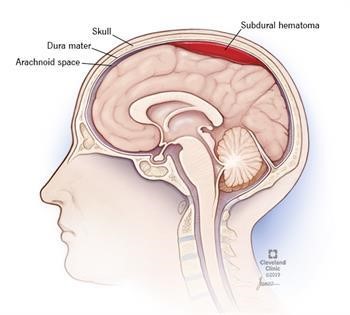A nurse is teaching a client about diagnostic vision tests. The nurse should include that which of the following tests is performed to diagnose macular degeneration?
Amsler grid.
Snellen chart.
Intraocular pressure.
Refraction test.
The Correct Answer is A
Choice A reason: This is the correct answer because the Amsler grid test is performed to diagnose macular degeneration. The Amsler grid is a pattern of straight lines with a dot in the center. The client is asked to look at the dot and report any distortions or missing areas in the grid. This can indicate damage to the macula, which is the central part of the retina that provides sharp vision.
Choice B reason: This is incorrect because the Snellen chart test is not performed to diagnose macular degeneration. The Snellen chart is a chart of letters of different sizes that are read from a distance. The client is asked to read the smallest line they can see clearly. This can indicate visual acuity or sharpness of vision, but not macular degeneration.
Choice C reason: This is incorrect because the intraocular pressure test is not performed to diagnose macular degeneration. The intraocular pressure test measures the pressure inside the eye using a device called a tonometer. The client may feel a puff of air or a gentle touch on their eye. This can indicate glaucoma, which is a condition where increased pressure damages the optic nerve, but not macular degeneration.
Choice D reason: This is incorrect because the refraction test is not performed to diagnose macular degeneration. The refraction test measures how well the eye bends light rays using a device called a phoropter. The client looks through different lenses and reports which ones make their vision clearer. This can indicate refractive errors such as nearsightedness, farsightedness, or astigmatism, but not macular degeneration.
Nursing Test Bank
Naxlex Comprehensive Predictor Exams
Related Questions
Correct Answer is D
Explanation
Choice A Reason: Head trauma is not one of the top causes of blindness in the United States, but rather a possible cause of it. Head trauma can damage the optic nerve, retina, or brain, leading to vision loss or impairment.
Choice B Reason: Cardiovascular disease is not one of the top causes of blindness in the United States, but rather a risk factor for it. Cardiovascular disease can affect the blood supply and oxygen delivery to the eyes, leading to conditions such as glaucoma, macular degeneration, or retinal vein occlusion.
Choice C Reason: Syphilis is not one of the top causes of blindness in the United States, but rather a rare cause of it. Syphilis is a sexually transmitted infection that can affect the eyes, leading to inflammation, scarring, or detachment of the retina.
Choice D Reason: This is the correct choice. Diabetic retinopathy is one of the top causes of blindness in the United States, affecting about 4.1 million adults. Diabetic retinopathy is a complication of diabetes that damages the blood vessels in the retina, leading to bleeding, swelling, or leakage of fluid. It can cause blurred vision, floaters, or blindness if left untreated.
Correct Answer is ["B","D","F"]
Explanation
Choice A Reason: Slow even breathing is not a sign of Cushing's Triad, which is a late indicator of increased intracranial pressure (ICP). The breathing pattern may be altered due to brainstem compression, but not necessarily slow or even.
Choice B Reason: This is a correct answer because bradycardia and bounding pulse are part of Cushing's Triad, which reflects an increased vagal tone and decreased cardiac output due to increased ICP.
Choice C Reason: Systolic hypotension with a narrowing pulse pressure is not a sign of Cushing's Triad, which involves an increased systolic blood pressure and a widened pulse pressure due to increased ICP. Hypotension may occur due to shock or hemorrhage, but not as a result of increased ICP.
Choice D Reason: This is a correct answer because irregular respirations are part of Cushing's Triad, which reflects impaired respiratory control due to brainstem compression from increased ICP. The respirations may be Cheyne-Stokes, central neurogenic hyperventilation, apneustic, or ataxic.
Choice E Reason: Tachycardia and bounding pulse are not signs of Cushing's Triad, which involves bradycardia and bounding pulse due to increased ICP. Tachycardia may occur due to pain, anxiety, fever, or hypoxia, but not as a result of increased ICP.
Choice F Reason: This is a correct answer because systolic hypertension with a widening pulse pressure are part of Cushing's Triad, which reflects an increased cerebral perfusion pressure due to increased ICP. The diastolic blood pressure remains stable or decreases, resulting in a widened pulse pressure.

Whether you are a student looking to ace your exams or a practicing nurse seeking to enhance your expertise , our nursing education contents will empower you with the confidence and competence to make a difference in the lives of patients and become a respected leader in the healthcare field.
Visit Naxlex, invest in your future and unlock endless possibilities with our unparalleled nursing education contents today
Report Wrong Answer on the Current Question
Do you disagree with the answer? If yes, what is your expected answer? Explain.
Kindly be descriptive with the issue you are facing.
